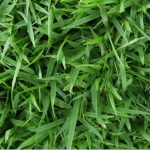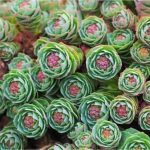Posted on June 18, 2020 in Gardening

With the climate changing, globally and in the UK, comes the need for adopting a different approach, regarding resource preservation, sustainable food production or renewable energy generation. And gardening, be it for food growing or to create an aesthetic environment for ourselves, is no exception.
British people, especially in the South, are purchasing drought resistant plants, which can withstand the longer and hotter summers the country experiences every five to ten years.
So, if you want:
- To understand the different xeriscaping techniques to make your green plot water-wise,
- To find examples of drought-resistant plants for your garden.
Then you’ve come to the right place!
Page Contents
How to spot drought symptoms in plants
How plants handle dry periods varies from species to species. But here are a few general signs you should look out for.
Drought resistant plants for your garden
Whether you fancy having a go at container gardening and plant some pretty xeriscaping plants, be it cacti, succulents, ornamental grasses or meadow-type plants, or you’re keen on turning your entire garden into a water-smart landscaping masterpiece, check out our list of plant varieties which will thrive in a hot and dry climate:
Drought Resistant Grass
Drought Resistant Shrubs
Drought Resistant Climbers
Drought Resistant Flowers
Drought Resistant Succulents
How to make your garden drought-resistant
Just investing in drought resistant plants is not enough. What you need to do is gradually build a thriving but low-maintenance and drought-tolerant garden. For that, you need to pay attention to a few key components.
Soil considerations
Well-nourished soil gives plants the best chance to develop their root system and grow strong and vigorous. However, a lot of plant species that are tolerant of dry conditions are less demanding, in terms of their nutrient needs.
Still, ensure that you cultivate new flower beds and the areas around established shrubs and perennials by digging the soil well. Then, lightly add an organic fertiliser of your choice, be it homemade garden compost, manure or some other natural product that you can find at your local garden centre.
Plants selection
Even if you’re not quite the horticulturalist you wished to be and you only have basic knowledge of different plant varieties, you can still learn how to recognise drought-tolerant species before you read the label.
Sun-loving plants that cope well in arid regions have common water-preservation characteristics, even if they differ in their appearance, including:
Planting tips
Now to the planting. To create your water-smart landscape, follow these important strategic tips to succeed:
Water-savvy tips
Immediately after planting, you can improve the soil’s water retention by adding mulch around your plants, such as bark or gravel. Also, ensure you keep on top of weeds by removing them manually or by using some natural weed killing techniques. After all, you want the little water that there is during droughts to sustain your beautiful plants, not unwanted weeds.
Also, during dry periods and hosepipe ban conditions, you can resort to alternative water resources. So, even if you’ve used up your rainwater supplies, you can employ the so-called greywater solution but only as a short-term measure against drought.
Greywater is a collective term for any household type of used water – the rinse cycles of your dishwasher or washing machine, or your bath and shower water. Don’t worry if the water contains mild detergents, as the soil has the capacity to filter them out.
Naturally, avoid irrigating edible crops with greywater to prevent contamination. And finally, do not reuse household water if it has been stored for longer than 24 hours to avoid the onset of bacteria growth on your precious plants.
Lawn care
Lawns are generally hardy when it comes to withstanding hot and arid conditions. Even if it turns a bit yellow or brown in the summer season, your lawn has the capability to recover completely in the rainy Autumn months. Still, there are several things that you can do to avoid summer drought stress damage to your lawn.
Some of the key tips you can take away are:
Hardscape changes
Many “drought-loving” gardens have no lawn areas at all. So, you may also want to consider turning parts of your grassed area into a trendy, drought-tolerant hardscaping feature by replacing it with gravel and potted plants. Making a gravel garden is actually not as hard as you think. And regarding its maintenance in heatwave conditions, you’ll have a much easier time than if you had to take care of a lawn.
So here you have it, our guide to drought-resistant gardening, which may come handy if you live in an area with low rainfall. Or find it useful in the future when we may see more extreme weather conditions of heat and drought. And if you ever need more professional guidance on your garden needs or expert garden maintenance assistance, don’t hesitate to get in touch with us.
If you need help or for information on our garden maintenance services please call 0845 604 1288 or visit Protech Garden Solutions.
Categories
- Building Maintenance
- Cleaning
- Electrical
- Gardening
- General Info
- Our Service
- Pest
- Security
- Uncategorized
- Waste Solutions
Archive
- April 2024
- March 2024
- February 2024
- January 2024
- December 2023
- November 2023
- August 2023
- April 2023
- February 2023
- January 2023
- December 2022
- November 2022
- October 2022
- September 2022
- August 2022
- July 2022
- June 2022
- May 2022
- April 2022
- March 2022
- February 2022
- January 2022
- December 2021
- October 2021
- September 2021
- August 2021
- July 2021
- June 2021
- May 2021
- April 2021
- March 2021
- February 2021
- January 2021
- December 2020
- November 2020
- October 2020
- September 2020
- August 2020
- July 2020
- June 2020
- May 2020
- April 2020
- March 2020
- February 2020
- January 2020
- December 2019
- November 2019
- October 2019
- September 2019
- August 2019
- July 2019
- June 2019
- May 2019
- April 2019
- March 2019
- February 2019
- January 2019
- December 2018
- November 2018
- October 2018
- September 2018
- August 2018
- July 2018
- June 2018
- May 2018
- April 2018
- March 2018
- February 2018
- January 2018
- December 2017
- November 2017
- October 2017
- September 2017
- August 2017
- July 2017
- June 2017
- May 2017
- April 2017
- March 2017
- February 2017
- January 2017
- December 2016
- November 2016
- October 2016
- September 2016
- August 2016
- July 2016
- June 2016
- May 2016
- April 2016
- March 2016
- February 2016
- January 2016
- December 2015
- November 2015
- October 2015
- September 2015
- August 2015
- July 2015
- June 2015
- May 2015
- April 2015
- March 2015
- February 2015
- January 2015
- October 2014
- May 2013
- April 2013
- November 2011
- September 2011
- June 2011
- January 2011
- December 2010
- November 2010
















